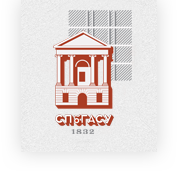Difficulties and Countermeasures in Metaphor Translation-Taking English-Chinese Metaphor Translation as an Example
DOI:
https://doi.org/10.63313/LLCS.9040Keywords:
Metaphor translation, English-Chinese metaphors, Translation difficulties, Translation strategieAbstract
In the perspective of translation studies, metaphor translation has always been an important issue that combines theoretical depth and practical complexity. This study specifically takes English-Chinese metaphor translation as the starting point and systematically analyzes the difficulties it faces. Given that English and Chinese belong to different language families, there are significant differences between the two in terms of cultural origins, language forms, and thinking logics. This makes English-Chinese metaphor translation encounter numerous difficulties in practice, which are specifically manifested in aspects such as the appropriate transformation of cultural images, the accurate understanding of metaphorical semantics, and the propriety of translation expressions. In response to the above difficulties, through in-depth theoretical sorting and case analysis, this paper puts forward targeted and feasible countermeasures, with the expectation of optimizing the effect of English-Chinese metaphor translation to a certain extent, enhancing the effectiveness of the translation in conveying the metaphorical connotations of the original text, and further making modest contributions to the theoretical expansion and practical improvement in the field of metaphor translation. Meanwhile, it is also hoped that this paper can provide valuable references for the vast number of professionals engaged in English-Chinese translation work.
References
[1] He, C.H. [2024] Metaphor Translation Analysis of English Literature Based on Cross-Cultural Perspective. New Chu Culture, 2024(05): 68-70.
[2] Wang, W.L. [2024] A Study on Metaphor Translation Strategies Based on Text Typology Theory. Ancient and Modern Literary Creation, 2024(10): 109-112.
[3] LIU, C.C. [2024] Differences in Metaphorical Meanings between English and Chinese and Exploration of Their Translation. Jiaying Literature, 2024(08): 98-100.
[4] CHE, H. [2023] A Comparative Study of Metaphor Differences in English-Chinese Transla-tion from a Cross-Cultural Perspective. Modern English, 2023(11): 69-72.
[5] LI, H.L. & WANG, T.S. [2013] The Development of Chinese EFL Learners’ Mental Represen-tation of Ambiguous Words: Evidence from Ambiguity Effects. Modern Foreign Languages, 2013, 36(04): 379-386+438.
[6] YUAN, F.Y. [2023] Translation Strategy Selection Oriented by Context of Application: A Case Study of Foreign Affairs Translation in Beijing. Beijing Translation, 2023, 1(00): 88-102.
[7] WU H.H. [2024] Research on the Translation of Huizhou Culture for International Commu-nication under the “Belt and Road” Initiative. English Square, 2024(30): 3-6.
Downloads
Published
Issue
Section
License
Copyright (c) 2025 by author(s) and Erytis Publishing Limited.

This work is licensed under a Creative Commons Attribution-ShareAlike 4.0 International License.















